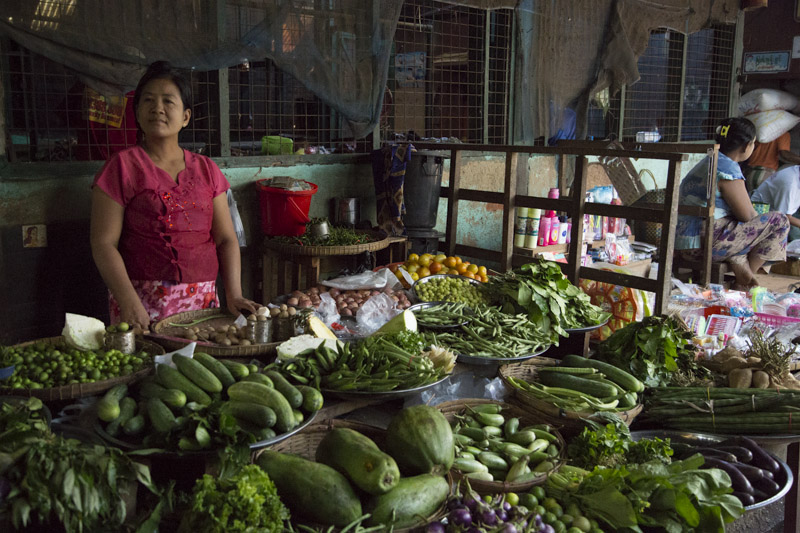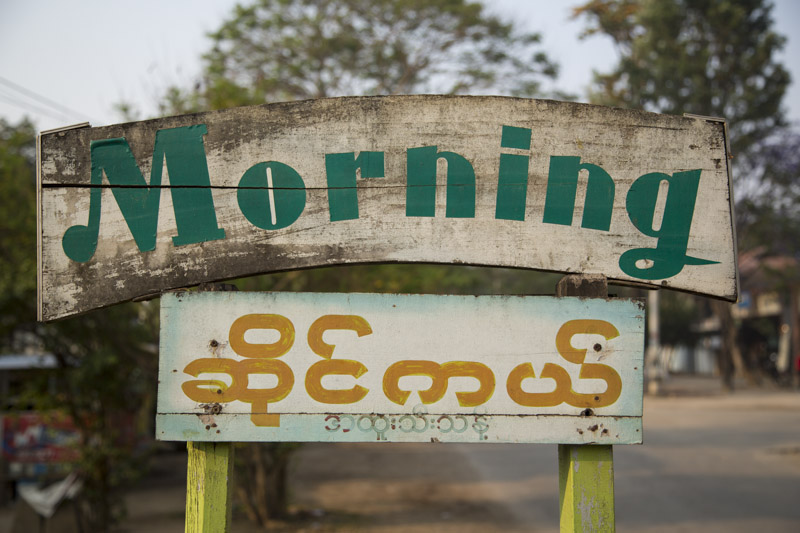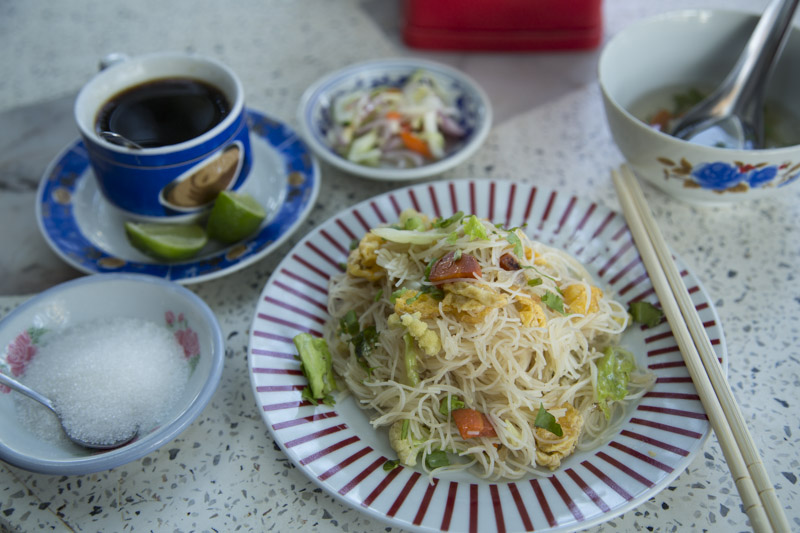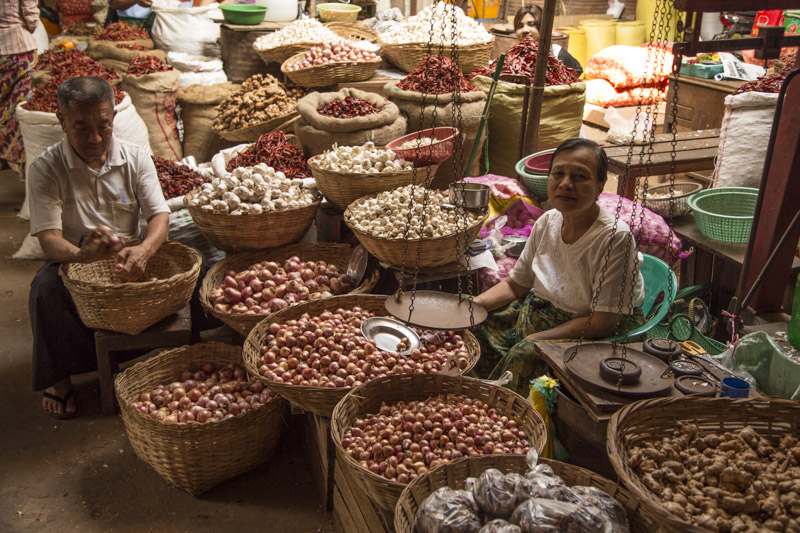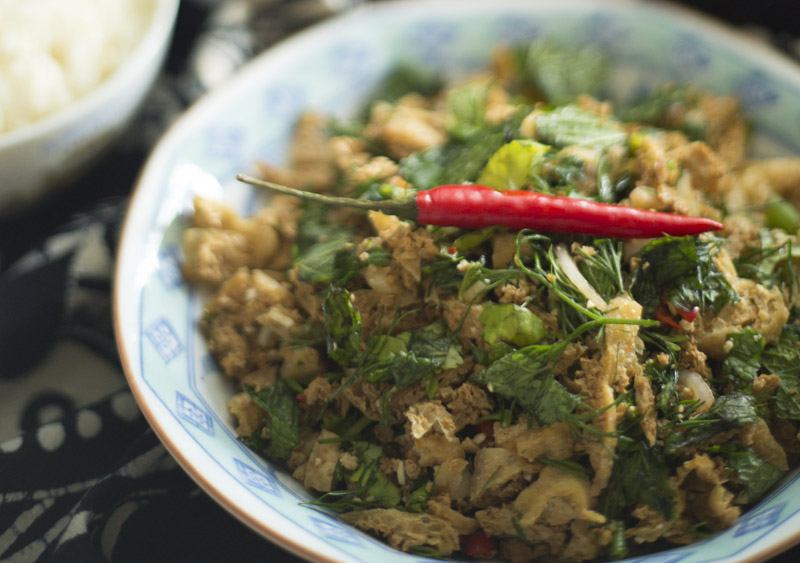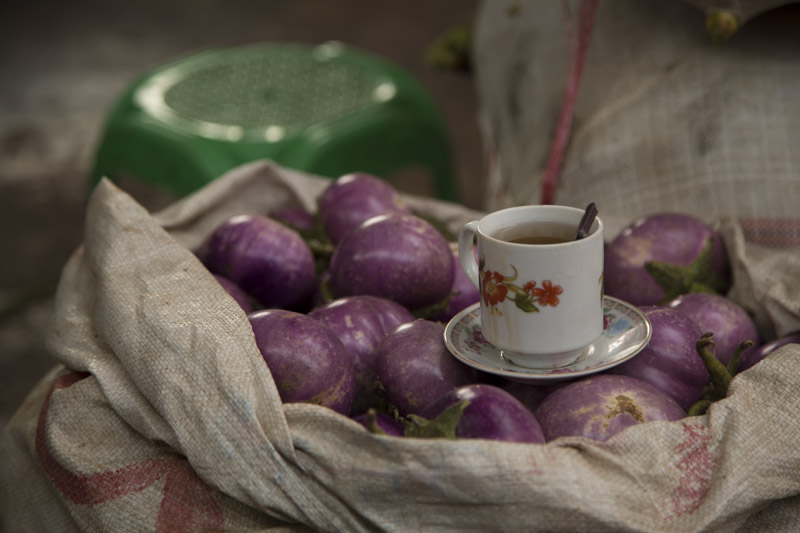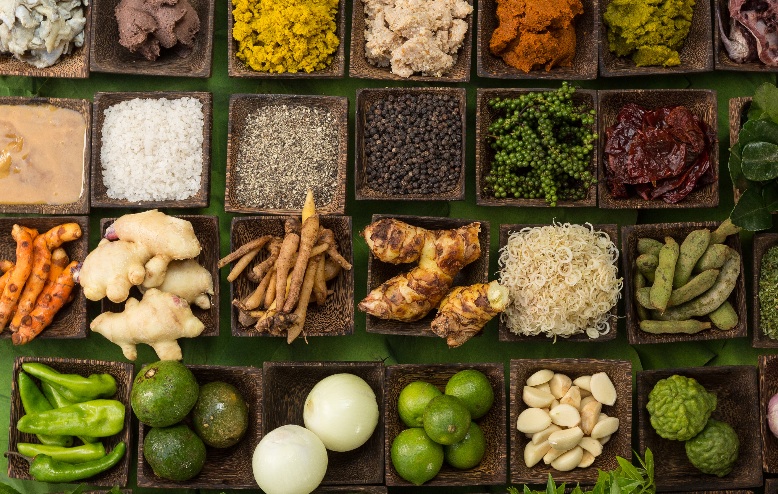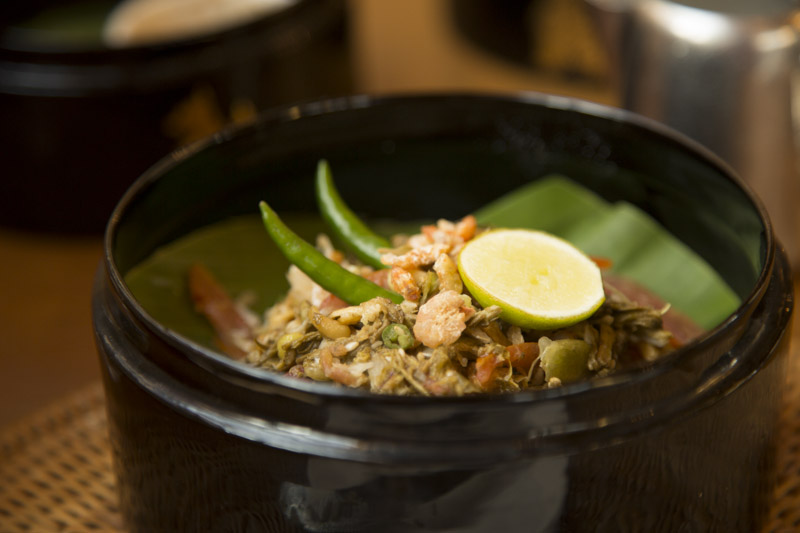Hemmed in by culinary big-hitters, the cuisines of Cambodia, Burma and Laos are little known outside their homelands. This is undeserved, but it does mean that delicious surprises await adventurous diners in each of the three countries…
Some foods appear across South-East Asia in slightly different guises (rice, noodles and fermented fish paste, for example), but cooks in each region also rely on many ingredients that are only available locally. The vast majority sound enticing to foreign diners, but others have less obvious appeal – spiders, ants’ eggs and giant water beetles, for example.
Once you’re on the ground, however, and eating each cuisine on its home turf, the flavours take on a life of their own, becoming entwined with memories from a trip, even if you never get around to trying the spiders.
We take a journey between three memorable meals from South-East Asia’s “secret” kitchens…
Breakfast in Burma
Mandalay’s morning traffic is just starting to move sleepily along the city’s grid of streets, but activity hums inside the teashop. Enthusiastic tea boys dodge between the tables, slopping tea into saucers and serving up deep-fried snacks. Patrons air kiss loudly to attract the staff’s attention, their eyes on the TV football match and their minds on teahouse gossip.
Stop for a bowl of mohinga (fish soup with rice vermicelli, shallots, lemongrass, garlic, chilli and lime, topped with boiled egg and chickpea fritters) – the nation’s favourite noodle soup. Refuel with a char kway (a Chinese-style doughnut) dunked in a cup of sweet, milky tea or a cup of Burmese coffee spiked with fresh lime. Whatever you order, starting the day at a teashop will fortify you for the day ahead.
A brief look around any market in Myanmar will reveal the key ingredients of Burmese cuisine: onions and shallots, rice and ngapi, a pungent fermented fish paste that vendors often stick incense sticks into to take the edge off the smell.
While Myanmar’s food shows influences from neighbours Thailand, India and China, it remains unique in many respects: Burmese cooks use fewer dried spices than their Indian counterparts; Thai cuisine’s chilli and coconut milk are notably absent; and pulses and beans are used with an abandon that would be foreign to most Chinese chefs.
Unusual ingredients pop up in unexpected places: strawberries from Shan State are made into delicious lassis with yogurt and curd; tealeaves are pickled and served with chilli and peanuts for a caffeine-infused snack; crisp samosas are topped with onions, coriander, chilli and roasted chickpea flour to create a delicious “salad”. You might find yourself hankering for any of the above after a trip to Myanmar, but nothing quite matches a humble teashop breakfast when it comes to capturing the flavour of everyday life.
Laos for Lunch
Just a short drive south from the Chinese border is northern Laos’s main town, Luang Namtha. Near the miniscule airport a short dirt lane dead-ends at a riverbank restaurant, The Boat Landing. With an airy dining room overlooking the river, a long menu of unfamiliar-but-tempting dishes and an appetite sharpened by the morning’s journey, this is the perfect spot for a leisurely lunch.
Start with the essentials; a lahp salad of minced meat or fish, accompanied by sticky rice and a jeow dipping sauce. Add an aw lahm stew of forest mushrooms, fish grilled in banana leaves, and a bowl of chicken soup, and you have a meal that will leave you wondering why Lao cuisine isn’t more widely enjoyed.
One of the distinguishing features of Lao cuisine is its use of fresh herbs, which are used in and on most dishes. Market stalls groan under bunches of different basils and mints, dill, cilantro, guava leaves, sawtooth herb, Vietnamese balm and many more.
While much produce is grown in gardens and on small farms, other foods are collected from paddy fields (fish, frogs and the aforementioned giant water beetles), and yet others are gathered from the region’s rainforests – rattan and bamboo shoots, ferns and wild mushrooms.
Whatever the providence of your meal, chances are that it will be best mopped up with a steamer of sticky rice. Eat at the Laotians do, rolling the rice into small balls that you can use to scoop up other dishes. You may feel inexpert, but when you eat this food as it’s meant to be eaten, it suddenly makes sense – the dry but flavourful salads and thick dipping sauces all work together perfectly to create an authentic Lao experience.
Dinner in Cambodia
By evening time, the scent of charcoal and grilling food fills the air in towns across Cambodia. Freshwater fish from the Mekong and Tonle Sap are pinned between skewers of split bamboo and slow-roasted to perfection. Slices of pork and chicken marinated in kroeng (spice paste) jostle for space on the barbecue.
Barbecued food is popular at any time of the day in Cambodia, but dinner is the most leisurely meal here, and a great way to linger and absorb the flavours and impressions of the day. Accompanied by rice (of course), a dipping sauce of green mangoes and chilli, and a bowl of fragrant soup, this delicious but simple meal combines the best produce of Cambodia’s fields and waterways, capturing the essence of the country itself on a plate.
The heat and aroma of black pepper run through many Cambodian dishes like a theme tying the cuisine together. Black pepper has been grown in Cambodia since the 13th century – the country’s Kampot pepper is considered the “King of Peppers”.
Where Cambodians use black pepper for heat, aromatic kroeng spice pastes are used for flavour. The details vary from kitchen to kitchen, but the base ingredients – lemongrass, galangal and kaffir lime leaves – are universal. Kroeng is used to flavour marinades, stir-fries, soups and one of Cambodia’s best-known dishes, fish amok, a mild fish curry thickened with coconut milk and steamed to a mousse-like texture in a bamboo leaf bowl.
Much like kroeng, the secret cuisines of South-East Asia are unique blends of amazing ingredients. Take fertile lands, well-watered by rivers and rain, and warmed by the tropical sun, then infuse with flavours from neighbouring countries, add a pinch of colonial cooking, and leave for the flavours to mingle. The result each time – whether you’re in Mandalay, Siem Reap or Luang Namtha – is something unique, memorable and delicious!
Try the flavours of South-East Asia’s Secret Kitchens for yourself
on the following journeys:
A Burmese Journey: From the Lanna Kingdom to the Bay of Bengal
Indochina: From the Mekong to the Gulf of Thailand
